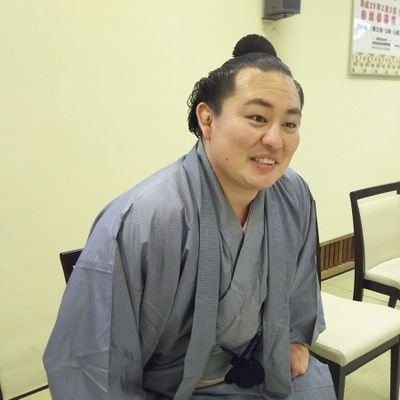Have you ever heard the word “Sashichigae” during a sumo match when the result suddenly changes? It refers to a formal system where judges correct the referee’s (gyōji’s) mistaken call after discussion.
In the world of sumo, a traditional Japanese sport, fairness and accuracy are of the utmost importance. This article clearly explains when sashichigae occurs, how it works, and why it plays a vital role in maintaining the sport’s integrity.
What Is Sashichigae?
Basic Meaning of Sashichigae
In sumo, sashichigae means that a referee’s decision is found to be incorrect and officially reversed after judges’ consultation. In other words, when the referee raises his fan (gunbai) toward one wrestler to declare victory but that decision turns out to be wrong, the ruling is corrected. Because the referee must make an instantaneous decision from close to the ring, human error can occur. The sashichigae system exists to prevent such mistakes and protect the fairness of matches.
Main Reasons Sashichigae Occurs
A sashichigae usually happens when a match is extremely close — for instance, when both wrestlers fall nearly at the same moment, or when one wrestler’s body touches the ground just a fraction earlier. The referee’s view can be limited depending on his position, making such decisions difficult. Judges around the ring confirm the result from multiple angles, using video and slow-motion replay for objective accuracy.
――――――――――――――――――――――――
The Relationship Between Sashichigae and Mono-ii (Judges’ Review)
From Mono-ii to Sashichigae
A sashichigae only occurs when judges call a “mono-ii” — a formal objection to the referee’s decision. The judges meet in the center of the ring to discuss and, if needed, review the footage. If they determine the referee made an error, the outcome is changed — this is sashichigae. If the referee’s decision is correct, it stands as “gunbai-dōri” (decision upheld). If it cannot be determined who lost first, the match is redone as “dōtai torinaoshi” (a rematch).
Types of Match Decisions
| Decision Type | Description |
|---|---|
| Sashichigae | The referee’s ruling is found to be wrong and corrected |
| Dōtai Torinaoshi | Both wrestlers fall simultaneously; the bout is redone |
| Gunbai Dōri | The referee’s decision is confirmed as correct |
――――――――――――――――――――――――
What Happens When a Sashichigae Occurs
The Referee’s Responsibility and Consequences
A sashichigae is a serious matter for a referee, as it affects his reputation and trust. While there is no immediate punishment, it can influence his career evaluation and promotion prospects. In high-ranked bouts such as those involving Yokozuna or Ōzeki, the pressure is even greater, and precise judgment is crucial. Experienced referees are expected to anticipate difficult situations and make calm, accurate calls.
Impact on Wrestlers and Spectators
When a sashichigae happens, the atmosphere in the arena changes dramatically. A wrestler who thought he had won may suddenly be declared the loser, leading to gasps or murmurs among the audience. Nevertheless, the system exists to preserve fairness, ensuring that the correct result is ultimately announced and accepted by all.
Referee Ranks and Their Responsibilities
| Referee Rank | Main Role | Level of Responsibility |
|---|---|---|
| Jonokuchi / Jonidan Referee | Handles beginner-level bouts | Light |
| Jūryō Referee | Officiates televised matches | High precision required |
| San’yaku Referee | Oversees top-division and Yokozuna bouts | Highest responsibility |
――――――――――――――――――――――――
History and Famous Cases of Sashichigae
Historical Background
The concept of sashichigae has existed since the Edo period. At that time, without video technology, judgments relied solely on human eyesight, which sometimes led to disputes or unrest among spectators. To maintain order and fairness, the judging system was formally established, and sashichigae became an official corrective measure. Modern technology now allows more objective and precise reviews using video replay.
Notable Cases of Sashichigae
| Era | Match Context | Outcome |
|---|---|---|
| Showa Period | Yokozuna vs. Ōzeki match | Video revealed the opposite wrestler had actually won |
| Heisei Period | Upper-division bout | Referee demoted after confirmed error |
| Reiwa Period | First video-based sashichigae case | Praised as a fair and transparent ruling |
Such examples highlight the importance of sashichigae in maintaining integrity and trust within the sumo world.
――――――――――――――――――――――――
How the Word Sashichigae Is Used
Figurative Use in Everyday Language
While sashichigae is primarily a sumo term, it can also be used figuratively in everyday situations. For instance: “The company’s initial decision was mistaken, but it was later sashichigae,” meaning the mistake was corrected. In this way, the word conveys the act of rectifying an error and restoring accuracy, similar to “correction” or “reversal,” but with a nuance of officially revising a previous judgment.
Comparison with Similar Expressions
| Expression | Meaning | Difference from Sashichigae |
|---|---|---|
| Correction | Fixing an error | No formal or institutional process required |
| Reversal | A result is overturned | Mainly used for rankings or competition outcomes |
| Sashichigae | Official correction of a referee’s decision | Formal procedure ensuring fairness |
――――――――――――――――――――――――
Conclusion
Sashichigae is a formal process in which a referee’s incorrect ruling is reviewed and corrected by judges, playing a vital role in ensuring the fairness and credibility of sumo. The courage to admit mistakes and the pursuit of accuracy embody the spirit of integrity that underpins the sport. With video review systems, decisions today are more transparent and precise than ever. For beginners and international fans, understanding this system deepens appreciation of the honesty, balance, and tradition that define Japanese sumo.





コメント